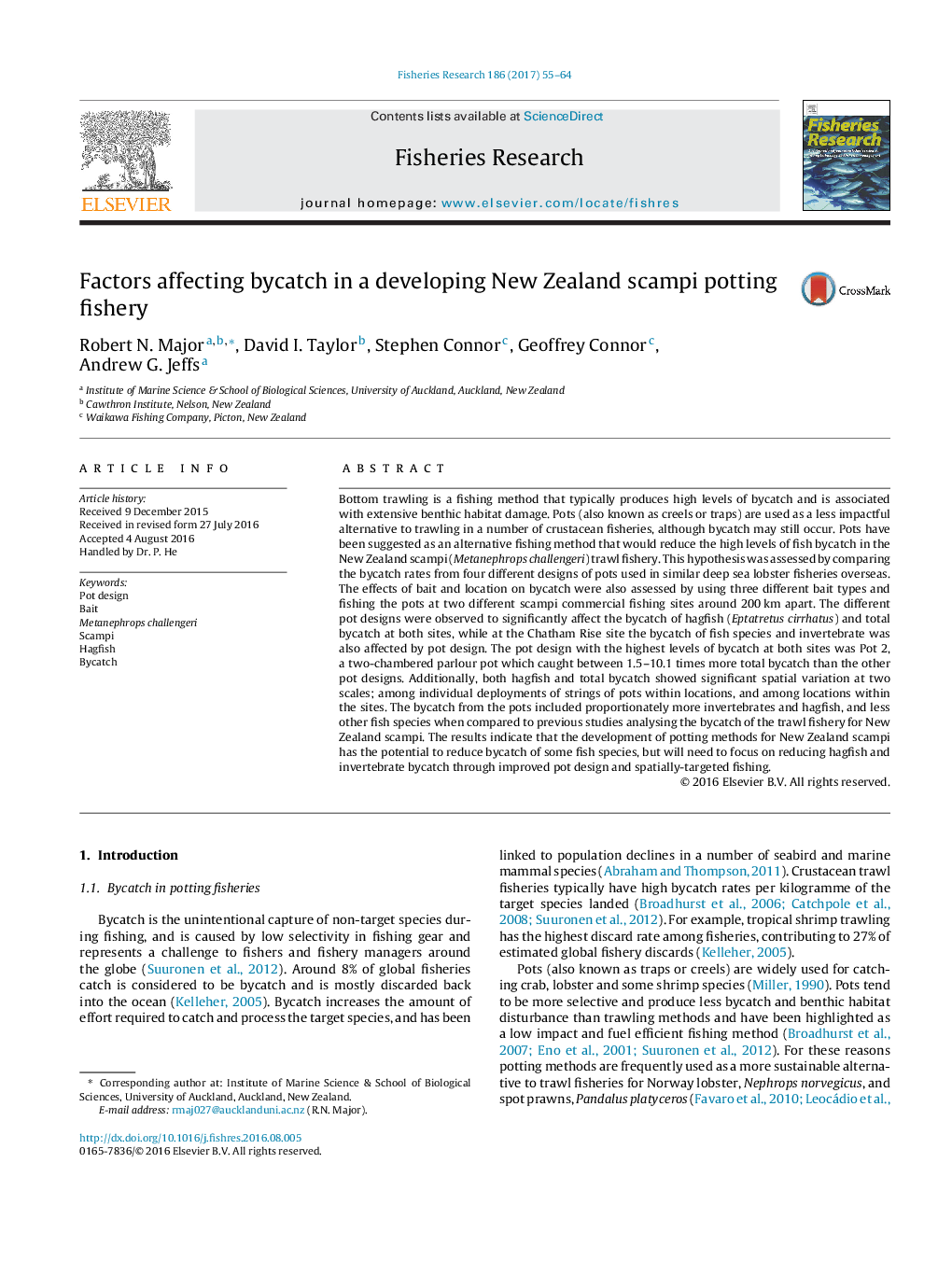| کد مقاله | کد نشریه | سال انتشار | مقاله انگلیسی | نسخه تمام متن |
|---|---|---|---|---|
| 4542601 | 1413079 | 2017 | 10 صفحه PDF | دانلود رایگان |
• Pot design significantly affected the total bycatch and bycatch of hagfish caught by experimental pots targeting New Zealand scampi.
• The two-chambered parlour caught 1.5–10.1 times more total bycatch than the other pot designs.
• Spatial variability effected bycatch rates among the strings of pots and among the different locations that were sampled.
• The pots caught less fish species than the established trawl fishery, but caught proportionally more invertebrates and hagfish.
Bottom trawling is a fishing method that typically produces high levels of bycatch and is associated with extensive benthic habitat damage. Pots (also known as creels or traps) are used as a less impactful alternative to trawling in a number of crustacean fisheries, although bycatch may still occur. Pots have been suggested as an alternative fishing method that would reduce the high levels of fish bycatch in the New Zealand scampi (Metanephrops challengeri) trawl fishery. This hypothesis was assessed by comparing the bycatch rates from four different designs of pots used in similar deep sea lobster fisheries overseas. The effects of bait and location on bycatch were also assessed by using three different bait types and fishing the pots at two different scampi commercial fishing sites around 200 km apart. The different pot designs were observed to significantly affect the bycatch of hagfish (Eptatretus cirrhatus) and total bycatch at both sites, while at the Chatham Rise site the bycatch of fish species and invertebrate was also affected by pot design. The pot design with the highest levels of bycatch at both sites was Pot 2, a two-chambered parlour pot which caught between 1.5–10.1 times more total bycatch than the other pot designs. Additionally, both hagfish and total bycatch showed significant spatial variation at two scales; among individual deployments of strings of pots within locations, and among locations within the sites. The bycatch from the pots included proportionately more invertebrates and hagfish, and less other fish species when compared to previous studies analysing the bycatch of the trawl fishery for New Zealand scampi. The results indicate that the development of potting methods for New Zealand scampi has the potential to reduce bycatch of some fish species, but will need to focus on reducing hagfish and invertebrate bycatch through improved pot design and spatially-targeted fishing.
Journal: Fisheries Research - Volume 186, Part 1, February 2017, Pages 55–64
